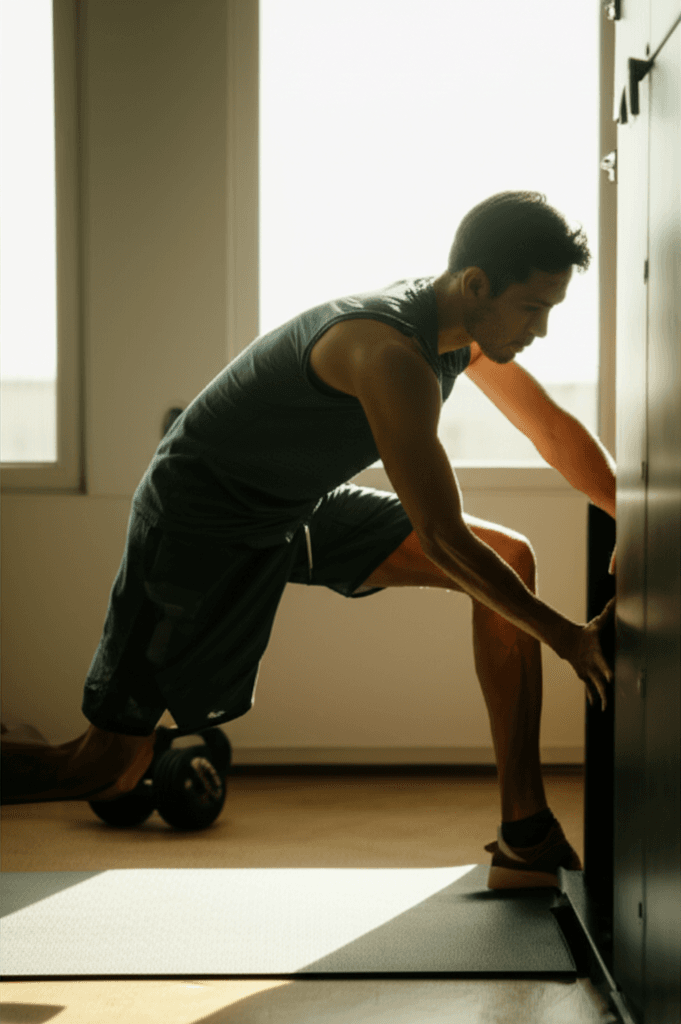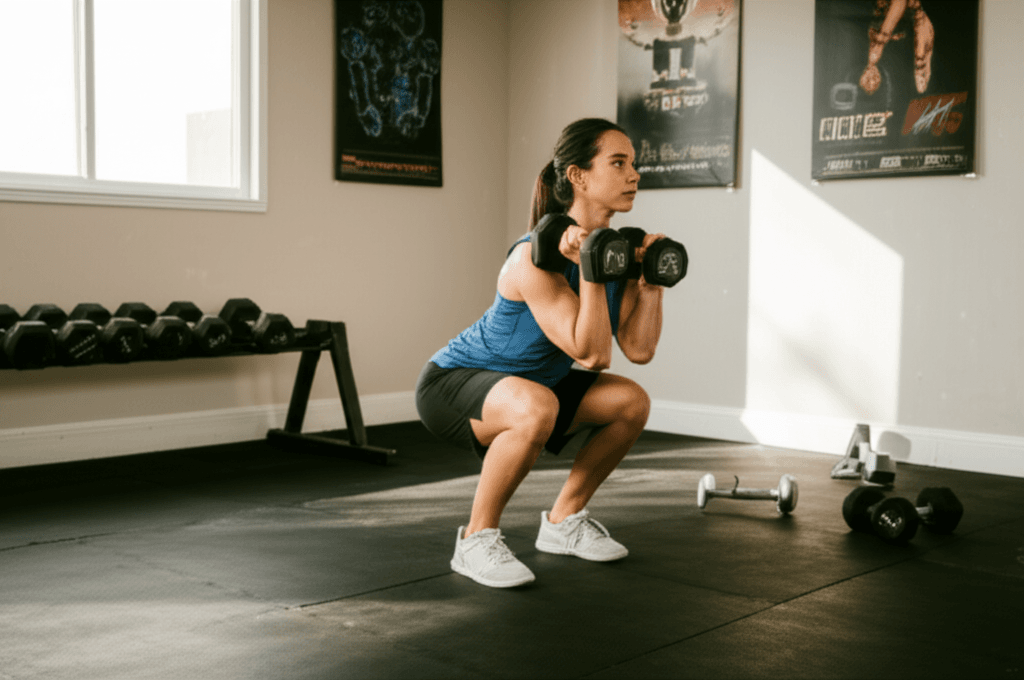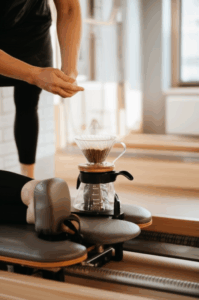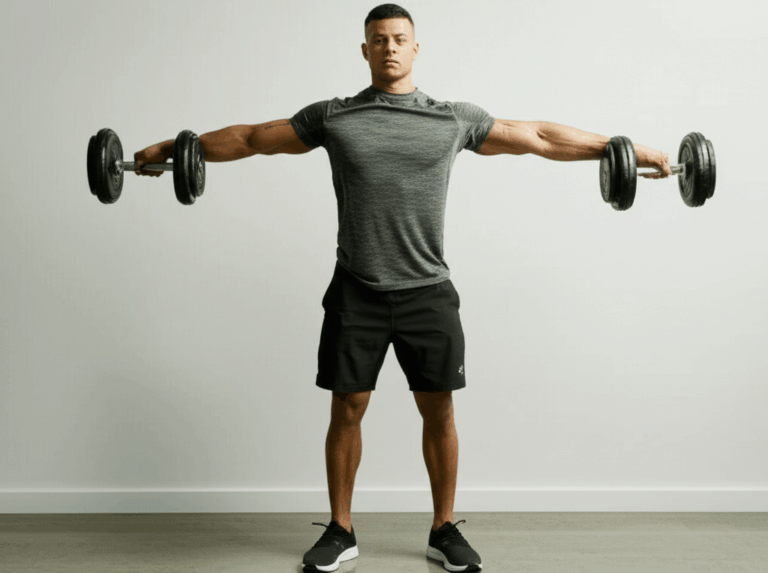Tired of complicated gym routines or limited equipment? You don’t need a sprawling gym to build a strong, well-defined physique. This comprehensive full-body strength workout, utilizing only dumbbells, is designed to challenge every major muscle group, making it perfect for at-home fitness enthusiasts, travelers, or anyone seeking an efficient and effective training solution. Dumbbells offer unmatched versatility and require more stabilization, making them excellent for building functional strength and improving muscle balance.

Why Choose a Full-Body Dumbbell Workout?
Full-body workouts are incredibly efficient, allowing you to hit all major muscle groups in a single session. This approach can be performed 2-3 times per week, with rest days in between, promoting muscle growth and recovery.
The Benefits of Dumbbell Training
- Complete Muscle Engagement: Dumbbell exercises often engage stabilizing muscles that might be missed in machine-based or barbell-only routines.
- Improved Muscle Balance: Working each side independently helps address muscular imbalances, leading to more symmetrical strength and reduced injury risk.
- Enhanced Functional Strength: Many dumbbell movements mimic real-world activities, improving your ability to perform daily tasks with greater ease and power.
- Convenience and Flexibility: Dumbbells are ideal for home workouts or when traveling, providing a complete strength solution without needing a gym membership or extensive equipment.
- Boosts Metabolism and Bone Density: Strength training, including dumbbell workouts, can help manage weight, increase metabolism, and improve bone density, reducing the risk of osteoporosis.

Warming Up: Preparing Your Body for Action
Before diving into your workout, a proper warm-up is crucial to increase blood flow, prepare your muscles and joints, and reduce the risk of injury. Aim for 5-10 minutes of light aerobic activity followed by dynamic stretches.
Dynamic Warm-Up Exercises:
- Arm Circles: 10 forward, 10 backward.
- Leg Swings: 10 forward/backward per leg, 10 side-to-side per leg.
- Torso Twists: 10 gentle twists to each side.
- Bodyweight Squats: 10-15 repetitions to activate leg muscles.
- Light Dumbbell Punches/Shadow Boxing: 1-2 minutes to engage the upper body and elevate heart rate.

The Full-Body Dumbbell Workout Routine
This routine focuses on compound movements, which work multiple muscle groups simultaneously, maximizing your workout efficiency. Perform 3 sets of 8-12 repetitions for each exercise, resting 60-90 seconds between sets. Choose a weight that challenges you to maintain good form throughout all repetitions.
Lower Body & Core
Targeting your glutes, quads, hamstrings, and core.
- Dumbbell Goblet Squat:
- How to do it: Hold one dumbbell vertically by one end close to your chest. Stand with feet shoulder-width apart, toes slightly out. Lower your body by bending your knees as if sitting in a chair, keeping your chest up and back straight. Descend until your thighs are parallel to the floor, or as deep as comfortable, then push through your heels to return to the starting position.
- Muscles Worked: Quads, glutes, hamstrings, core.
- Dumbbell Romanian Deadlift (RDL):
- How to do it: Stand with a dumbbell in each hand, palms facing your thighs. Keep a slight bend in your knees. Hinge at your hips, pushing your glutes back, and lower the dumbbells towards the floor, keeping them close to your legs. Maintain a flat back and a tight core. Feel the stretch in your hamstrings. Squeeze your glutes to return to the upright position.
- Muscles Worked: Hamstrings, glutes, lower back.
- Dumbbell Lunges (Alternating):
- How to do it: Stand tall with a dumbbell in each hand. Step forward with one leg, lowering your body until both knees are bent at approximately 90-degree angles. Ensure your front knee is over your ankle and your back knee hovers above the floor. Push off your front foot to return to the starting position and alternate legs.
- Muscles Worked: Quads, glutes, hamstrings, calves, core.
- Dumbbell Renegade Row:
- How to do it: Start in a high plank position with your hands gripping dumbbells on the floor, slightly wider than shoulder-width apart. Keep your core tight and body in a straight line. Shift your weight slightly to one side, then row the opposite dumbbell towards your hip, squeezing your shoulder blade. Lower with control and repeat on the other side. This exercise requires strong core stability.
- Muscles Worked: Back, shoulders, core, chest, biceps.
Upper Body
Focusing on your chest, back, shoulders, and arms.
- Dumbbell Floor Press (or Bench Press if available):
- How to do it: Lie flat on your back with knees bent and feet flat on the ground. Hold a dumbbell in each hand, palms facing each other, with elbows resting on the floor, upper arms close to your body. Press the dumbbells straight up towards the ceiling, locking out your elbows. Slowly lower them back down until your upper arms rest on the floor. If you have a bench, use it for a greater range of motion.
- Muscles Worked: Chest, triceps, shoulders.
- Bent-Over Dumbbell Row:
- How to do it: Stand with feet hip-width apart, holding a dumbbell in each hand, palms facing your body. Hinge forward at your hips, maintaining a flat back, until your torso is nearly parallel to the floor. Let the dumbbells hang straight down. Pull both dumbbells towards your hips, squeezing your shoulder blades together. Lower with control.
- Muscles Worked: Back (lats, rhomboids, traps), biceps.
- Dumbbell Overhead Press:
- How to do it: Stand or sit with a dumbbell in each hand at shoulder height, palms facing forward or neutral. Press the dumbbells directly overhead until your arms are fully extended. Control the movement as you lower the dumbbells back to shoulder height.
- Muscles Worked: Shoulders (deltoids), triceps.
- Dumbbell Bicep Curl:
- How to do it: Stand tall with a dumbbell in each hand, arms fully extended at your sides, palms facing forward. Keeping your elbows close to your torso, curl the weights up towards your shoulders, contracting your biceps. Slowly lower the weights back to the starting position.
- Muscles Worked: Biceps.
- Dumbbell Triceps Extension (Overhead or Lying):
- How to do it (Overhead): Hold one dumbbell with both hands and extend it overhead. Keeping your elbows close to your head, slowly lower the dumbbell behind your head by bending your elbows. Extend your arms to return to the starting position.
- How to do it (Lying): Lie on your back with arms extended towards the ceiling, holding a dumbbell in each hand. Keeping your upper arms stationary, bend your elbows to lower the dumbbells towards your temples. Extend your arms to push the weights back up.
- Muscles Worked: Triceps.

Cooling Down: Essential for Recovery
A cool-down helps your heart rate return to normal and stretches your muscles, improving flexibility and reducing post-workout soreness. Dedicate 5-10 minutes to static stretches.
Static Cool-Down Stretches:
- Quad Stretch: Hold for 20-30 seconds per leg.
- Hamstring Stretch: Reach for your toes or use a towel for assistance, hold for 20-30 seconds per leg.
- Chest Stretch: Link hands behind your back or use a doorway, hold for 20-30 seconds.
- Triceps Stretch: Reach one arm overhead, bend the elbow, and gently pull the elbow with the opposite hand, hold for 20-30 seconds per arm.
- Bicep Stretch: Extend an arm, palm up, and gently pull your fingers back towards your body, hold for 20-30 seconds per arm.
- Calf Stretch: Lean against a wall with one leg back, heel on the floor, hold for 20-30 seconds per leg.

Progressive Overload with Dumbbells
To continue making gains, you need to challenge your muscles progressively. This is known as progressive overload.
Strategies for Progressive Overload:
- Increase Weight: The most direct way to challenge your muscles is to lift heavier dumbbells.
- Increase Repetitions: If increasing weight isn’t an option, aim for more reps within your target range (e.g., from 8 to 10 or 12 reps).
- Add Sets: Once you can comfortably hit the top end of your rep range, add an extra set to an exercise.
- Reduce Rest Time: Shorter rest periods between sets increase the intensity of your workout.
- Improve Form & Time Under Tension: Focus on slower, more controlled movements or pause at the point of greatest tension to increase the time your muscles are under stress.
- Increase Frequency: If your schedule allows, consider adding another full-body workout day per week (e.g., from 2 to 3 days per week).
By consistently applying these principles and maintaining proper form, this full-body dumbbell strength workout will help you build muscle, increase strength, and improve your overall fitness from the comfort of your own home or wherever you train.







